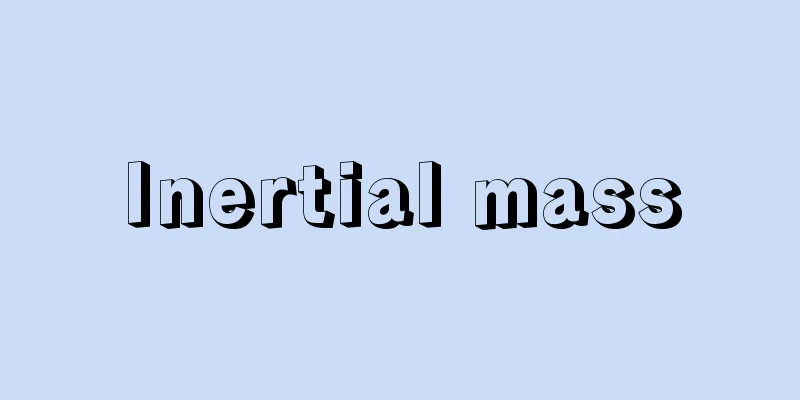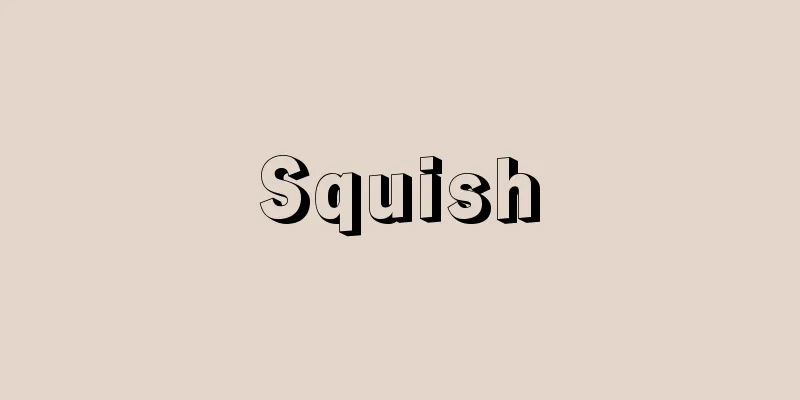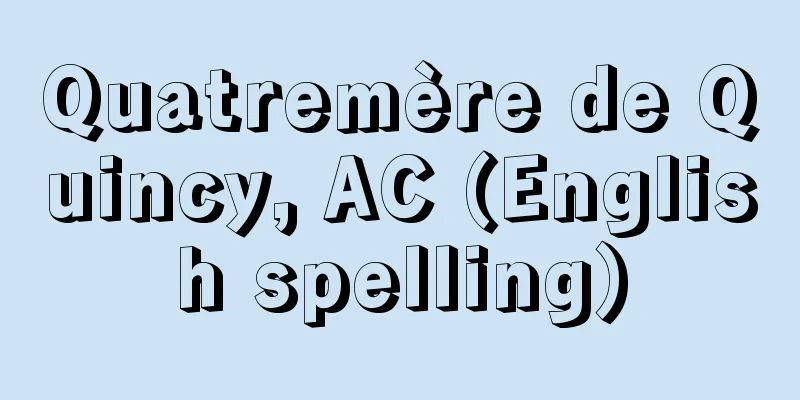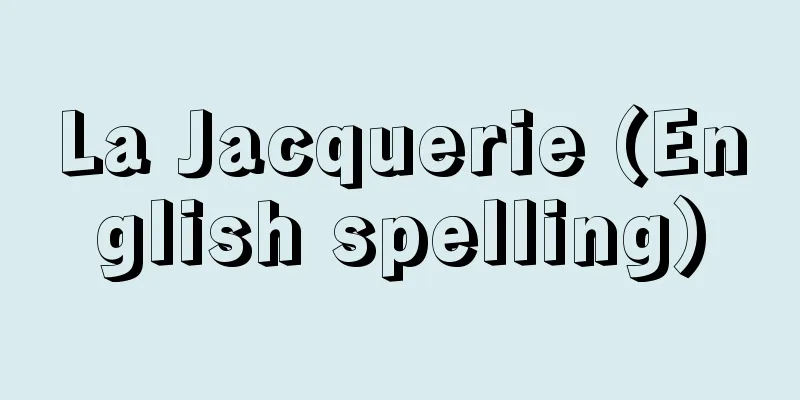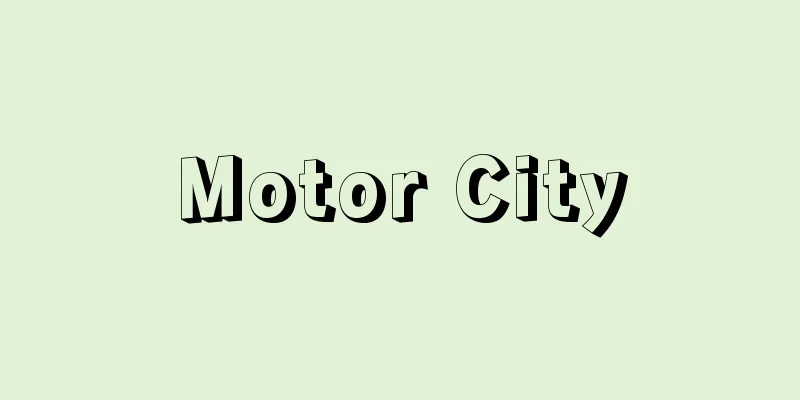The Green Party (English spelling)
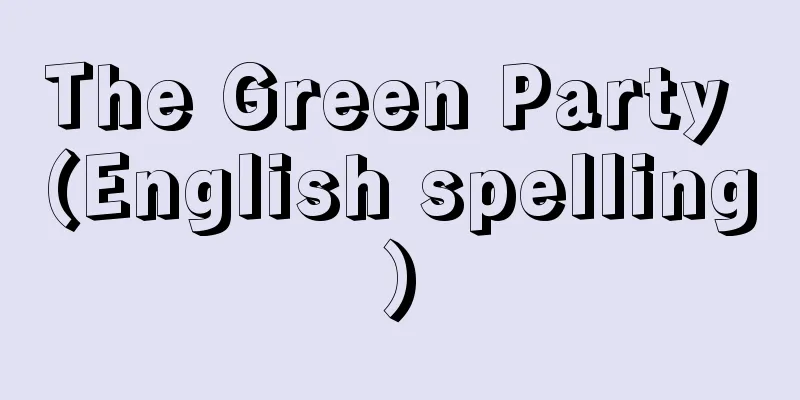
|
A political party in the Federal Republic of Germany that aims to create an ecologically compatible society and goes beyond the traditional conservative/right-wing opposition. It is also called the "Green People." After the reunification of East and West Germany, it merged with the former East German civil political organization Bündnis 90, and in 1993 changed its official name to Bündnis 90/Die Grünen. The Green Party is often described as a single-issue party with the sole theme of environmental protection, but this is inaccurate. It proposes a new comprehensive social vision and diverse policies, such as the restructuring of industrial society from an ecological perspective, the creation of a welfare society, gender equality, the realization of a multicultural society, and peace policies. The Berlin Party Platform, "The Future is Green," adopted in 2002, advocates "a sustainable ecological restructuring of industrial society" and "an expansion of the concept of social justice" to include equal opportunities for access to education, knowledge, and information, gender justice, and intergenerational justice. The Green Party was born as a political organization of the following new social movements that emerged after the mid-1970s: the environmental protection movement, the anti-nuclear power plant movement, the movement for gender equality (feminism), the movement for minority protection (elimination of discrimination against the elderly, foreign residents, Roma, homosexuals, etc.), the social self-help group movement in the welfare field, the movement for practicing a new urban culture, the solidarity movement with the Third World, and the anti-nuclear and peace movement. First, in the late 1970s, the Green Party created candidate lists called the "Green List", "Multicolor List", and "Alternative List" at the state level and won seats in the state parliament. In 1980, the Green Party was founded as a national organization at the federal level in Karlsruhe. As a result, the organization is decentralized, and each state branch has diverse characteristics. Representative members of the Green Party when it first won seats in the 1983 federal election were social activist Petra Karin Kelly (1947-1992), lawyer Otto Schily (1932-), who later joined the Social Democratic Party (1989) and became Minister of the Interior in the Schröder administration in 1998, and Joschka Fischer (1948-), who became Vice Chancellor and Foreign Minister in the Schröder administration. The Green Party was initially described as "we are neither to the right nor to the left, but in the forward direction." This is because at the time of the party's founding, a diverse range of political groups were involved, including, on the one hand, members of the New Left, such as Rudi Dutschke (1940-1979) of the Außenparlamentarische Opposition (APO), an extraparliamentary opposition group that was part of the anti-authoritarian protest movement by students and young people in the late 1960s, and, on the other hand, conservative ecologists such as Herbert Gruhl (1921-1993), a former member of the Christian Democratic Union, and August Haußleiter (1905-1989). However, the conservative group left the party early on, and Gruhl went on to form the Ecological Democrats, the Ökologisch-Demokratische Partei (ÖDP). The 1980 platform contained four principles: The background to the establishment of the Green Party includes advanced industrialization and the progression of environmental pollution on a global scale, a shift from materialistic values oriented towards economic growth to post-materialistic values that emphasize quality of life and political participation, and the inability of existing political parties to adequately respond to these changes. The emergence of the Green Party influenced Germany's established political parties, and by the late 1980s, environmental protection had become a common policy issue. Since winning seats in the Bundestag in the 1983 election, the Green Party has established itself in the party system of the former West Germany. The Green Party of West Germany, which opposed the hasty unification of Germany, failed to win any seats in the 1990 unification elections and only won a small number of seats in East Germany. After the reunification of East and West Germany, at the joint conference of the Green Party and Alliance '90 in 1993, they set out "human rights, ecology, democracy, social justice, social equality between men and women, and non-violence" as their basic values. In the 1994 federal election, the Alliance '90 and the Green Party made a comeback, winning 7.3% of the vote nationwide and 49 seats. Since its founding, the Green Party has had fierce internal debates between fundamentalists and realists over election platforms, policies, and coalition issues. In the 1990s, however, the party participated in coalition governments with the Social Democratic Party (SPD) at the state level in Lower Saxony, North Rhine-Westphalia, and Hesse. Through this experience, the party gained the ability to govern, and after the 1998 federal election, it participated in the Schröder coalition government for the first time at the federal level. The Schröder government (1998-2005) was called the "red and green coalition government" after the symbolic colors of the SPD and the Green Party. Under the Schröder government, the Green Party took the lead in implementing new policies for a "sustainable industrial society." Nuclear power phase-out, ecological tax reform, revision of the nationality law and the enactment of immigration laws were implemented, and the Green Party's leadership in particular led to the promotion of renewable energy, policies for consumer protection, and the enactment of the "Life Partnership Law" that recognizes same-sex marriage. In addition, an anti-discrimination law proposed by the Green Party was passed during the grand coalition government (2006) as the General Equal Treatment Act. In the 2009 election, the Green Party won a record 10.7% of the votes, but was the fifth largest party. However, under the five-party system, the Green Party has the potential to take the lead in a coalition with the two major parties. A 50% quota for women is in place for government officials and parliamentary candidates, and more than half of the party's executives and members of the Bundestag are women. The party's supporters are getting older than they were initially due to a generational effect, but they are particularly prevalent in the mid-40s and under age group, the highly educated, white-collar workers, civil servants, and freelancers. The party has approximately 45,000 members (2007). The Green Party won seats in parliament not only in Germany, but in many European countries from the 1980s to the 1990s. At the national level, it participated in Italy's center-left Olive Tree government and France's Jospin Socialist-led government. There was an international coalition called the European Green Alliance, but in 2004 a new European-level political party, the European Green Party, was established. In the 2009 European Parliament elections, 55 members of parliament from 20 parties in 14 countries were elected, and the party is part of a unified group with other political groups in the parliament, the Greens-European Liberal Alliance. [Tsubogo Minoru] "The Green Party" by Nakai Bin (1986, Iwanami Shoten) " ▽ "New Social Movements and the Green Party" by Tsubogo Minoru (1989, Kyushu University Press)" ▽ "Green Politics, new edition by S. Spletnak and F. Capra, translated by Yoshifuku Shinichi, Tanaka Michihiko, and Kaede Eisaku (1992, Seidosha)" ▽ "The Politics of Environmental Policy: Germany and Japan" by Tsubogo Minoru (2009, Waseda University Press)" [References] | | | | |Source: Shogakukan Encyclopedia Nipponica About Encyclopedia Nipponica Information | Legend |
|
エコロジーに適合する社会を目ざす、従来の保革(左翼・右翼)対立を超えたドイツ連邦共和国の政党。「緑の人々」とも称される。東西ドイツの統一後、旧東ドイツの市民政治組織である90年連合Bündnis 90との合体により、1993年から正式名称を90年連合・緑の党Bündnis 90/Die Grünenとする。緑の党は、しばしば環境保護のみをテーマとする単一争点の政党と紹介されるが、これは不正確であり、エコロジーの視点からの産業社会のつくりかえ、福祉社会の構築、男女の平等、多文化社会の実現、平和政策など新しい総合的な社会構想や多様な政策を提案している。2002年に採択されたベルリン党綱領「将来は緑」では、「産業社会の持続可能なエコロジー的作り直し」と、教育や知識・情報へのアクセスの機会の平等、性間の公正、世代間の公正を含む「社会的公正概念の拡大」を主張している。 緑の党は、1970年代なかば以後に噴出した次のような新しい社会運動の政治組織として誕生した。それは、環境保護運動、反原子力発電所運動、男女平等のための(フェミニズム)運動、少数者保護(高齢者、定住外国人、ロマ、同性愛者などの差別撤廃)運動、福祉の領域での社会的自助グループ運動、新しい都市文化を実践する運動、第三世界との連帯運動、反核・平和運動などである。最初、1970年代後半に、州レベルで「緑のリスト」、「多色のリスト」、「オルタナティブ・リスト」とよばれる候補者リストを作成し、州議会で議席を獲得した後、1980年にカールスルーエで連邦レベルの全国組織として緑の党が結成された。そのため、組織は分権的であり、各州支部は多様な特徴をもっている。緑の党が1983年の連邦議会選挙で初の議席を獲得したときの代表的メンバーは、社会運動家ペトラ・ケリーPetra Karin Kelly(1947―1992)、後に社会民主党に入党(1989)し、1998年シュレーダー政権で内務相に就任した弁護士のオットー・シリーOtto Schily(1932― )、シュレーダー政権の副首相兼外相に就任したヨシュカ・フィッシャーJoschka Fischer(1948― )らである。また、緑の党は当初、「われわれは、右でもなく、左でもなく、前方にいる」と表現された。これは党の創設時、一方で1960年代後半の学生や青年による反権威主義的な抗議運動のひとつであった議会外反対派Außenparlamentarische Opposition(APO)のルディ・ドゥチュケRudi Dutschke(1940―1979)らニュー・レフト(新左翼)のメンバー、他方で旧キリスト教民主同盟議員のヘルベルト・グルールHerbert Gruhl(1921―1993)、アウグスト・ハウスライターAugust Haußleiter(1905―1989)ら保守エコロジストなど、多様な政治グループがかかわったことによる。しかし、早期に保守グループは離脱し、グルールはエコロジー民主党Ökologisch-Demokratische Partei(ÖDP)を結成するに至った。1980年綱領では、四つの原則として 緑の党の成立背景として、高度の産業化と地球的規模での環境汚染の進行、経済成長指向の物質主義的価値観から生活の質や政治参加を重視する脱物質主義的価値観への変化、既存の政党がこれらの変化に十分に対応できないことなどがあげられる。緑の党の出現はドイツの既成政党に影響を与え、1980年代後半には、環境保護は共通の政策課題となった。1983年の選挙で連邦議会に議席を獲得して以来、緑の党は旧西ドイツの政党制に定着した。 ドイツの早急な統一に反対した西ドイツの緑の党は、1990年統一選挙では議席を獲得できず、東ドイツでわずかな議席を得たにとどまった。東西ドイツ統一後、緑の党と90年連合との1993年合同大会では、基本価値として「人権、エコロジー、民主主義、社会的公正、男女の社会的平等、非暴力」が掲げられた。この90年連合・緑の党は1994年の連邦議会選挙では全国で得票率7.3%、49議席を獲得し、復活を果たした。 創立当初から、選挙綱領・政策や連立問題をめぐって原理派と現実派の間で激しい党内論争が続いていた緑の党だが、1990年代に入り、ニーダーザクセン州、ノルトライン・ウェストファーレン州、ヘッセン州などの州レベルで社会民主党(SPD)との連立政権に参加した。この経験を通じて政権担当能力を身につけ、1998年連邦議会選挙後、連邦レベルで初めてシュレーダー連立政権に参加した。シュレーダー政権(1998~2005)は、SPDと緑の党のシンボルカラーから「赤と緑の連立政権」とよばれた。このシュレーダー政権下で緑の党は「持続可能な産業社会」への新しい政策の主導権を握った。脱原発、エコロジー税制改革の実施、国籍法の改定と移民法の制定があり、さらにとくに緑の党の主導権によって再生可能エネルギーの促進、消費者保護のための政策、同性の結婚を認める「生活パートナーシップ法」が制定された。また、緑の党が提案した反差別法が「一般均等待遇法」として、大連立政権期(2006)に成立している。2009年選挙では、過去最高の10.7%を獲得したが、第5党である。しかし、5政党制のもとで、緑の党は二大政党との間で、連立の主導権を握る可能性をもっている。役職者および議員候補者について女性の50%割当制を実施しており、党役員・連邦議会議員の半数以上が女性である。支持者は、当初に比べ世代効果により年齢が上昇しているが、とくに40代なかば以下の年齢層、高学歴層、ホワイトカラー、公務員、自由業に多い。党員数は約4万5000人(2007)。 緑の党は、ドイツのみならず、1980年代から1990年代にかけて、ヨーロッパの多くの国々で議席を獲得した。国政レベルでは、イタリアの「オリーブの木」中道左派政権や、フランスのジョスパン社会党主導政権などに参加した。国際的な連合体として「ヨーロッパ緑の連合」があったが、2004年にヨーロッパレベルの政党として新たに「ヨーロッパ緑の党」が設立された。2009年ヨーロッパ議会選挙では、14か国20政党55議員が当選し、同議会において他の政治グループとの統一会派「緑の党・ヨーロッパ自由連盟」に属している。 [坪郷 實] 『仲井斌著『緑の党』(1986・岩波書店)』▽『坪郷實著『新しい社会運動と緑の党』(1989・九州大学出版会)』▽『S・スプレットナク、F・カプラ著、吉福伸逸・田中三彦・谺田栄作訳『グリーン・ポリティックス』新版(1992・青土社)』▽『坪郷實著『環境政策の政治学――ドイツと日本』(2009・早稲田大学出版部)』 [参照項目] | | | | |出典 小学館 日本大百科全書(ニッポニカ)日本大百科全書(ニッポニカ)について 情報 | 凡例 |
<<: Green worm (Green worm) - Green worm (English spelling) Lineus fuscoviridis
>>: Green Revolution - Midori no Kakumei (English spelling) green revolution
Recommend
Manzanillo (English spelling)
A city in the western part of Colima state in sout...
Identity - English spelling: identity
When two expressions can be connected with an equa...
Larch moth - Larch moth
...The main pests in this family are: pine leaf m...
Iwananten (Leucothoe keiskei) - Iwananten (English spelling)
An evergreen shrub of the Ericaceae family. Also k...
catabolism
...Thus, although the efficiency of energy conver...
Centrifuge - Enshinbunriki
A machine that uses centrifugal force to separate...
Fiebiger
Danish pathologist. Studied under Koch in Berlin. ...
Potto - Potto (English spelling)
A prosimian of the loris family of primates (illus...
Familial Hypercholesterolemia
[What kind of disease is it?] Familial hypercholes...
Zener diode
A silicon diode that can keep the terminal voltag...
Gardenia japonica - Gardenia japonica
A semi-parasitic biennial plant of the Scrophular...
Women's Suffrage Promotion Association - Women's Suffrage Promotion Association
A women's suffrage movement group founded in 1...
Dictionary of the Academy (English)
The Académie Française, founded in 1635, decided i...
Indricotherium
...The scientific name comes from the beasts of B...
Baby teeth - Nyuushi
In humans, teeth develop twice. The first ones to...


